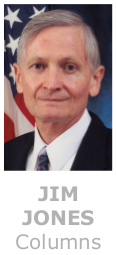
The meshing of religion and politics is as clear today as it ever has been: To a remarkable degree, poll after poll has found, you can tell how someone votes if you know where (or if) they go to worship.
And this picture is changing fast, maybe faster nationally than it ever has. Idaho is changing, too, and in some ways not at all obvious.
The latest source material for this is a massive report, released last week (at www.prri.org/research/american-religious-landscape-christian-religiously-unaffiliated/), by the Public Religion Research Institute, a “nonprofit, nonpartisan organization dedicated to conducting independent research at the intersection of religion, culture, and public policy.” It draws on a survey of more than 100,000 Americans, a huge sample, with detailed results at the state level.
One of its major takeaways is this: “White Christians, once the dominant religious group in the U.S., now account for fewer than half of all adults living in the country. Today, fewer than half of all states are majority white Christian. As recently as 2007, 39 states had majority white Christian populations.”
Idaho, as you may expect, is still one of those majority white Christian states. But the margin is shrinking. When it did a similar survey in 2007, PRRI found that Idaho was 67 percent white Christian (Latino and black Christians were categorized separately). Today, that figure stands at 56 percent.
The trend line is comparable all over. Utah dropped from 68 percent to 61 percent. Less-churched Oregon went from 57 percent to 43 percent. Washington state fell from 55 percent to 42 percent.
Further, an age gap is widening (part of the reason for the change). Many Christian groups are seeing much smaller percentages of affiliation within younger age groups. The report noted, “Only slightly more than one in ten white evangelical Protestants (11%), white Catholics (11%), and white mainline Protestants (14%) are under the age of 30. Approximately six in ten white evangelical Protestants (62%), white Catholics (62%), and white mainline Protestants (59%) are at least 50 years old.” Among evangelicals, this marks a downturn after a generation of steady, sometimes explosive, growth.
The report did also note “the Mormon exception”: “Although Mormons are a predominantly white Christian religious tradition, there is little evidence to suggest that they are experiencing similar declines. Currently, 1.9% of the public identifies as Mormon, a number identical to findings from a 2011 study of Mormons in the U.S. Mormons are also much younger than other white Christian religious traditions.”
That’s significant in Idaho, where Mormons are the largest religious group (at 20 percent of the population) in the state, ahead of evangelical Protestants, who make up 15 percent.
What may surprise a lot of people, though, is that the largest religious-based segment of the population in Idaho, larger than either of those two, is the unaffiliated, at 27 percent. Idaho’s rate is actually higher than the national percentage, which is 24 percent – three times what it was a quarter-century ago. Idaho is one of the 20 states where unaffiliateds are the biggest part of the population. That contrasts with 12 states where evangelicals are the largest group, or 11 where Catholics are, or the one (Utah) where Mormons hold the largest share. Idaho’s share of unaffiliates ranks just ahead of Wyoming and Nebraska – which would be understandable company – but also immediately behind California and Nevada.
These statistics mark some big changes. The effects aren’t likely to manifest immediately, or in the next two or three years. But religion eventually does have a big impact on politics, the economy and much else. Watch for it.
Share on Facebook





































